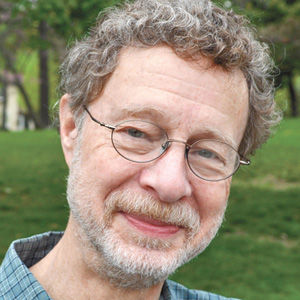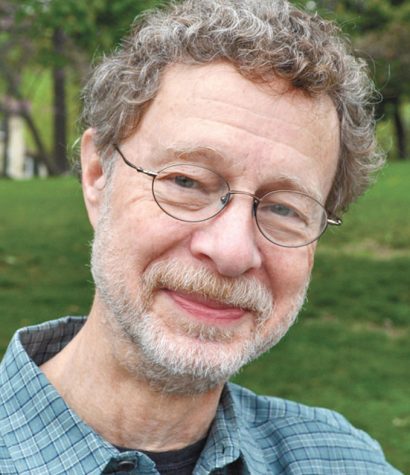Health, sadness, hope and the virus
Published May 7, 2020
The earliest military death carved into the 140 polished black stone panels of the Vietnam Veterans Memorial in Washington, D.C., is that of Air Force Tech. Sgt. Richard B. Fitzgibbon Jr. of North Weymouth, Mass. He was killed in Saigon on June 8, 1956, at the age of 35.
The most recent deaths recorded on the Wall, as it’s reverently known, are those of 18 U.S. service members who died May 15, 1975.
The first death in the United States now attributed to COVID-19, the disease caused by coronavirus SARS-CoV-2, is that of Patricia Dowd, 57, of San Jose, Calif. A senior quality manager at tech firm Lam Research Corp., Dowd died Feb. 6.
It took 20 years for the Vietnam conflict to claim the lives of the 58,276 U.S. service members whose names the Wall memorializes. It took COVID-19 less than three months to kill more in the United States alone. And it is by no means finished with its savagery.
The Wall, as I noted in a previous column, has become a hallowed place of “remembrance, sorrow, pain and sometimes healing and hope.”
There is no memorial, of course, to the more than 250,000 people worldwide whose lives the COVID-19 pandemic has choked off so far.
There is no special place of remembrance to comfort family members ravaged by pain, heartbroken friends, neighbors and co-workers hurting from loss, those robbed of work, those still working at great personal risk whether delivering groceries, cleaning buildings or caring for the afflicted while trying to somehow protect themselves.
The Wall’s capacity for healing and hope seems unduplicated in pandemic matters. Certainly, neither is apparent in the incoherent daily briefings and tweet rants out of Washington.
Starting back in March, my own emotional state fell into a pattern of darting in and out of an overwhelming sadness. Sometimes, and not surprisingly, a newspaper, TV, radio or online story with clear connections to the pandemic triggered my gloom. But sometimes it snuck up on me, traveling a more primal pathway to a deeper connection that just made a mess out of me. Sometimes, also not surprisingly, these involved music.
Some examples:
The first musical piece I came across that hit me hard was a video made in mid-March by the Chamber Singers group at Chino Hills High School about 35 miles east of central Los Angeles.
Separate images of the faces of about 20 high school kids filled my computer screen, forming a virtual a cappella group that sang a breathtaking multiharmony arrangement of “Over the Rainbow.” I started crying within 10 seconds and continued for some time after the 3卦-minute piece ended. The tune’s lyrics of longing for a trouble-free life surrounded by beauty felt crushingly sad, but coming from teenagers, there at least was some hope at its core.
About a month later, I saw a fundraising video for the COVID-19 Emergency Relief Fund of the Motion Picture & Television Fund. About 80 musicians scattered around the world became a virtual orchestra that played and sang an inter-connected combination of “Bridge Over Troubled Water” and “What A Wonderful World.” The song titles and the cause should have warned me off, but I plowed ahead and ended up with tears everywhere and heaviness in my heart.
Some of the straight journalism pieces have been even harder to handle.
Just this Sunday, reading The New York Times over breakfast, I settled on a piece about two couples, one in Pennsylvania and one in Georgia, each of whom had been married for many decades. Both members of both couples contracted COVID-19 and died within days of each other.
I was particularly moved by a tender detail that reporter Katherine Rosman included about Dr. Delutha King Jr. and Lois King of Atlanta and their life together:
“At night, they would watch ‘The Tonight Show Starring Johnny Carson,’ sitting in the built-in recliners at either end of their couch and reaching their arms toward the middle, over the newspapers they had been reading, to hold hands.”
That early in the morning, my house was quiet, except for the sounds of ruffling newspaper pages and stifled sobs over a bowl of granola.
A couple of weeks ago, I read a brief essay by Dan Rather, the former longtime CBS News reporter/anchor, and felt deeply touched by it. The essay, posted on his Facebook page, was about sadness in our COVID-19 times and touched on anger and politics:
“I feel the waves cresting, amplified by a siren, or a headline, or just the wanderings of my mind. Sadness. Sometimes a deep river of sadness, sometimes sprinklings. Oftentimes it sinks in and won’t let go …
“I keep coming back to the sadness … the idea that so much of this likely could have been prevented. And the sadness that comes from the gnawing question of how much future pain could be mitigated if we had leaders who took a different course. There is sadness at the actions taken (and the actions not taken) that have defied reason and science.”
I’ve known Rather and have been following his work for close to 40 years. We seem to be on a similar wavelength of sadness, though I think he is more optimistic than I am. We spoke about it last week by phone.
I mentioned the hopeful line in his essay that expresses “deep belief in the goodness of my fellow citizens.” I said that I’ve always believed in the fundamental decency of human beings and still do. But there is an undercurrent of ugliness now that’s very disturbing.
“Look,” he told me, “I am an optimist by nature and experience. You have to fight sadness. It goes through my mind a lot: ‘I’m OK so far. I don’t have the virus. I haven’t given the virus to anyone else. And I haven’t added to the burden on the health care system.’
“You never give up on hope, even within a deep catastrophe. We’re always pursuing the distant shores of being better, of trying to make things better. … I ask myself if I’m responding as I should, if I’m doing as much as I could.”
Dan’s clearly handling things better than I am right now. I need to improve on that.
Eric Mink is a freelance writer and editor and teaches film studies at Webster University. He is a former columnist for the St. Louis Post-Dispatch and the Daily News in New York. Contact him at [email protected].

















